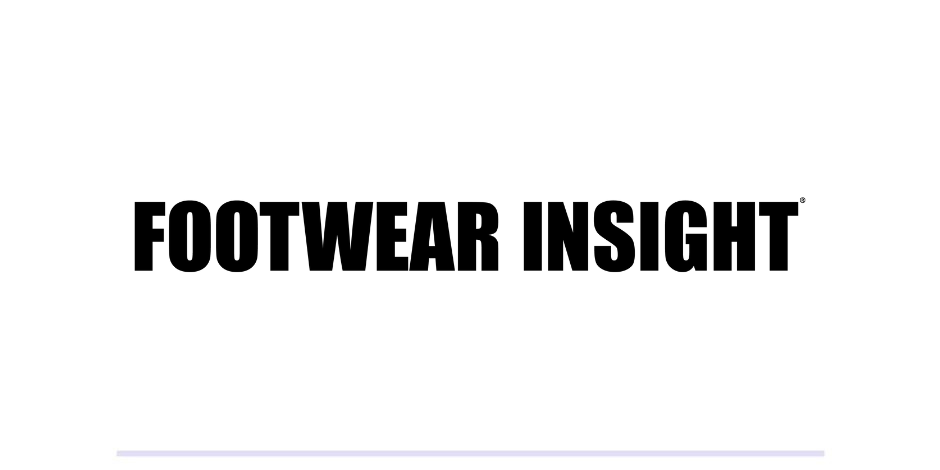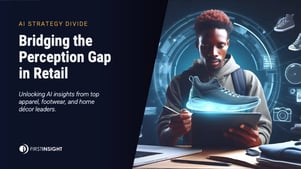Footwear Insight Mentions First Insight | Know Me. Show Me. Reward Me.
The National Retail Federation’s “NRF ’25 - Retail’s Big Show” was held in New York City in January. As I mentioned in my letter last year, the show continues to be big. Really big. Wall-to-wall booths filled with technology, people, seminars and conversations designed to make you see, think and discuss what’s possible.
As you would expect, the key talking point at the NRF ’25 was Artificial Intelligence (AI). Experts in the field say, “Get started with AI. Get out of your comfort zone and think big.” They used terms like “AI Agents” that can help with customer service or warehouse logistics. One example was the use of smart cameras deep in the warehouse that monitor traffic flow. For example, if a shelf collapses, spilling the boxes into the aisle blocking the path, AI sends out a message redirecting the forklift operators (or self-operating ones) to a new path averting disruptions.
The question is, can AI help me sell more? And if it can, how best to deliver it in a frictionless manner? According to Greg Petro, CEO of First Insight (no relation) who spoke about how to leverage AI in a competitive environment, “It’s the product stupid.” As he said, “Give me a product that I want, when I want it, where I want it, or I will find it somewhere else.” Other ideas for AI included adding a value score to product (1 -10), which would correspond to a metric correlated to an outcome resulting in a what products are best to offer. Using consumer data, AI can help in the discussion of “make more of this and less of that.”
For retailers, AI can also help in suggestive selling… if you are interested in this item, you might want to think about (insert product idea). Another good point, AI strengthens your forward-looking ability based on current data.
A few of the seminars that I had attended at NRF ’25 focused on customer engagement and more specifically, store loyalty programs. The overarching theme? Keep it simple. Keep it fun. Keep it focused.
Loyalty Program Tips
Don’t simply focus on giving away margin, which is after the sale and easy, we were told. Or to put it another way, don’t just do it for the transaction. Find programs that help you get out onto the sales floor to engage with the consumer while they are on their shopping journey. Where do you meet your customers? How do you get them to change their behavior? You want them to be part of the “club.” Loyalty programs are the connection points. There is also the multi-generational shift. Friends and Family save 25%... remember that? That was good. We need better.
Create tiers, such as Bronze/Silver/Gold, with Gold allowing for the best access to limited products. Other suggestions were to create an experiential award, for in-store activations. Create programs that earn points through non-transactional events. There was talk about gamifications and aspirational tiers that enable you to reward different customers, differently, with the end goal to “level up” with rewards such as “choose your own sales day.” I liked that.
Thinking out loud here, for the higher level tiers consider offering a shoe protection plan that covers accidental damage…if a customer buys a pair of shoes, offer a discount on related products like insoles, socks, or shoe care products…offer rewards based on seasons, birthdays or the anniversary of their last purchase…offer a program where customers can use their rewards for charity.
The key is to design the loyalty program so that it feels rewarding without putting too much strain on customers who may not buy often. You want to keep your program low-effort but high-reward, so it feels that it is worth their time without overwhelming them with conditions.
A shoe store offering a customer loyalty program can bring a lot of benefits, both for the store and its customers.
Loyalty programs reward repeat customers, making them more likely to return and incentivize customers to spend more per visit to reach rewards. Loyalty programs allow retailers to gather valuable customer data (like purchase habits, favorite styles, sizes, etc.), which can help with personalized marketing. Tailoring promotions and offers based on customer preferences can drive even more sales.
Happy (rewarded) customers are more likely to recommend that store to others, which can lead to word-of-mouth referrals. People love to share deals, so a great loyalty program can expand the store’s customer base.
Programs that can give your sales associates that customer’s information on their past purchases can engage very differently…before the transaction. Information that is relevant and offered in real time builds a stronger connection.
Make the loyalty program a subtle selling point. Right after the fitting, you could mention it in a way that doesn’t feel pushy, but highlights the value. Let them know your loyalty program is not just about discounts, but long-term benefits. You can also offer an immediate benefit to joining such as a small discount on that pair.
And don’t forget about the non-transactional data — when a customer leaves without a purchase. Understanding why they didn’t buy is part of the customer engagement and what loyalty programs, with perhaps a little help from AI, can do.
There is a lot of chatter about customers coming into your stores to try on a pair of shoes, get fitted, and then leave to purchase online. Can store loyalty programs help? Well, like most things, it depends.
The challenge of getting someone to join the loyalty program after spending time in your store, but not making a purchase, is to focus on what they can gain from it—not on the fact that they did not buy anything. Shift the conversation from a “you missed a sale” mentality to a “here’s how we can help you in the future” approach. If they’ve expressed interest in a certain type of shoe (like a pair of boots or running shoes), you can let them know that, as a loyalty member, they’ll be the first to know when those styles are in stock or go on sale.
Politely ask for their email (or phone number) so you can keep them updated on new arrivals, sales, or events. Having their contact info allows you to engage them later.
If they seem open to it, offer to add them to your loyalty program even before a purchase. For instance: “We can sign you up for the loyalty program now so you’re all set for next time! You’ll get notifications about new styles, sales, and rewards as soon as you make your first purchase.”
By presenting the loyalty program as a resource they can take advantage of later—whether it’s through discounts, personalized service, or exclusive access to promotions—you make the program feel like a natural extension of their experience in your store, not just a reward for buying something today.
Getting the word out about your store’s loyalty program is just as important as designing it well. Let customers know with in-store signage, staff training or a dedicated loyalty page on your website where people can easily read about the program’s benefits, how it works, and how to sign up. With BOPIS (buy on line, pick up in store), providing an exclusive offer for first-time sign-ups whether it’s a discount or bonus points, can also increase participation.
The beauty of a small, independent store is the relationship you already have with your customers. Make it feel like a special thank you for their continued support of your business. Emphasize the family-focused, local feel in your messaging.
The key to success is consistency—make sure you’re promoting your loyalty program across multiple touchpoints (in-store, online, email, social media). And for programs to be a win-win, everyone must be able to understand the rules.
In this issue’s Trend Insight survey, we asked consumers if they were a loyalty member at brick-and-mortar shoe stores. 44% said “Yes.” 59% of those who said yes shop at that store specifically because of their loyalty program. We also asked, what would make a store’s loyalty program more valuable to you? Turn to page 48 to read their comments.
I think Emily Rudin, VP Loyalty Product Strategy & Growth, Oracle summed up loyalty programs quite nicely: Know me. Show me. Reward me. And I can add, “is to love me.” It’s all part of delivering that outstanding customer service experience.
Read article on Footwear Insight.













